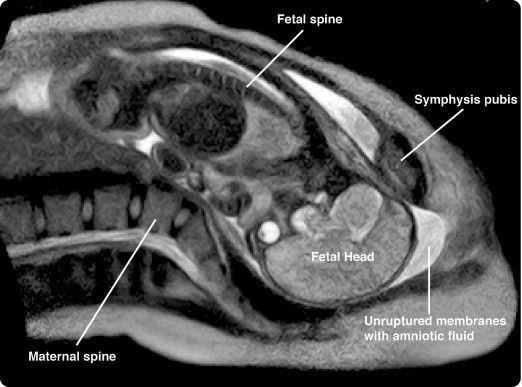The View From the Inside: Human Birth Captured for the First Time in Real-time MRI Video

MRI examination of the maternal pelvis in the third stage of labor. Left panel shows the separated placenta located in the lower uterine segment and vagina just before expulsion. Right panel shows uterus in the midsagittal view directly after the delivery of the placenta with an empty uterine cavity. Photo: Bamberg. Birth in real-time MRI. Am J Obstet Gynecol 2012.
A team of German scientists announced in 2010 that they have recorded the world's first real-time magnetic resonance imaging (MRI) video of a woman giving birth.
While back in December 2010 researchers from Charité University Hospital in Berlin led by researcher Christian Bamberg had only released pictures of the incredible feat, they have now released the video.
The 30-second movie captures the active second stage of labor as the mother makes expulsive efforts to push out the fetus. Researchers had to stop recording in the late second stage as the fetal head extended and from the mother to ensure that the ears of the newborn were still covered by maternal soft tissue so that it was not exposed to MRI noise.
Researchers used cinematic MRI to take repeated images of the same slice of the body before assembling them to create an ultra-detailed video.
The technique was recently used to capture unborn twins for the first time for researchers to study a common complication where one twin receives more of the blood supply and grows to become larger than the other, according to New Scientist.
Bamberg and his team said that knowledge about the mechanism of labor was based on assumptions and radiographic studies performed decades ago, and that the point of the new study, published in the American Journal of Obstetrics & Gynecology, was to describe the relationships between the fetus and the mother's pelvis as the newborn travels through the birth canal by using an open high-field MRI scanner.
Researchers said the latest findings should help doctors better manage labor and deliver.
In 1999, researchers led by Pek Van Andel also used MRI scans to record couples having sex in the "missionary position." The study, published in the British Medical Journal, was to understand female sexual response and the male and female genitals during coitus.
Published by Medicaldaily.com



























